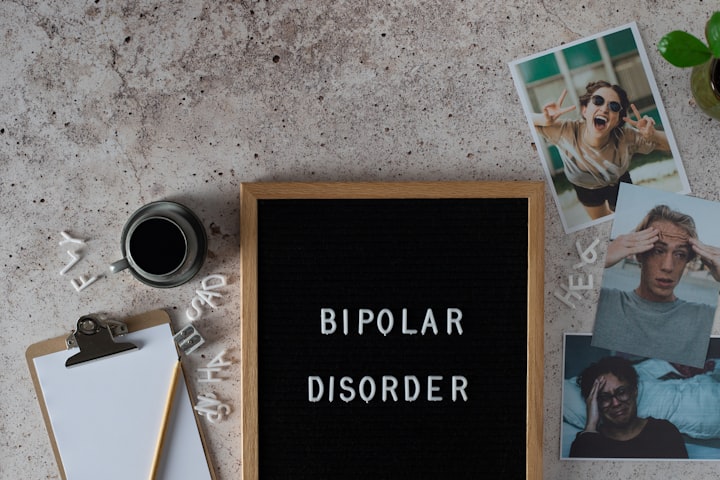Progressive Muscle Relaxation
How It Can Manage Stress and Anxiety

Disclaimer: This article should not be taken as medical advice. This is my experience and what I have learned about Progressive Muscle Relaxation. As always, seek medical advice from a practitioner.
Progressive Muscle Relaxation, or PMR for short, is a tool you can use when experiencing the day-to-day stresses of life, anxiety, and the beginning of an anxiety attack. While PMR has become more of a mainstream treatment in the past few years, this technique was developed in the 1920s by Dr. Edmund Jacobson, who believed that relaxing the muscles in the body can calm the mind as well.
How Stress and Anxiety Affect Our Bodies
The human body has a specific set of reactions to a perceived or real threat. This is called a fight or flight instinct, meant to protect us from that threat. When there is a threat, real or perceived, our body releases hormones, two of which are adrenaline and cortisol. Stress and anxiety can trigger this response for as long as we feel stressed and anxious.
Adrenaline causes the heart rate and blood pressure to increase and boosts the body's energy.
Cortisol increases the level of glucose in the bloodstream, represses the digestive and reproductive systems, and alters the body's immune system.
Prolonged exposure to these stress hormones can cause the following:
• Heart disease, including heart attack and high blood pressure
• Memory and concentration difficulties
• Trouble sleeping
• Headaches
• Weight gain
• Digestive issues
• Depression
• Anxiety
• Muscle pain and tension
The importance of stress management cannot be overstated, as it affects our physical and mental health in so many dangerous ways. PMR is a tool you can use to help manage stress and anxiety. You can read a more in-depth article from the Mayo Clinic below.
"An anxious mind cannot exist in a relaxed body…." - Dr. Edmund Jacobson
What is Progressive Muscle Relaxation?
PMR is the tensing then releasing of muscles in your body in a specific sequence, along with controlled breathing (inhaling when you tense muscles, exhaling when you release muscles). Many people use guided PMR, either with a video or audio and, in some cases, guided by a therapist during therapy sessions. After practicing this technique, you may not need a guided session. I have been using this technique for years, so I no longer need guided sessions. I do, however, listen to meditative music while practicing PMR.
How to Practice Progressive Muscle Relaxation
You will want to find a quiet place where and a time when you will not be interrupted. When laying down is not an option at work, or where you are, a variation of the whole body technique can be done in your chair.
When lying down in a comfortable position, close your eyes and focus on your breathing. Let any thoughts that pop into your mind go. Focus on breathing in and out for a few moments. As you breathe in, you will tense a muscle group. (Not to the point of pain). Hold it for four or five seconds, then instantly release the tension and breath. (Do not relax your muscles or breathe out gradually). Rest for ten or fifteen seconds, and then you will do the same thing with the next muscle group. Guided PMR is the best way to start.
If laying down is not an option, or you feel tension in your neck, shoulders, and head, you can do a shortened version in your chair, focusing on just these muscles.
Here is a list of the muscle groups you will use during PMR and how to tense them. (Note: some guided PMR sessions use different sequences of muscle groups. The list below is in no particular order; follow the order of the guided session.
• Hands: either clench into a fist or spread your fingers as far apart as you can.
• Arms: place palms flat next to you and push your hands downward.
• Lower legs: Point your toes towards your face, curling the toes as well. Point your toes downward, stretching the toes open.
• Thighs: clench them together tightly.
• Hips and Buttocks: squeeze the buttocks and upper thighs.
• Chest: take a deep breath in and hold.
• Stomach: hold the stomach in, pulling your belly button down towards your back.
• Back: arch your back off the flat surface, bringing your shoulder blades together.
• Neck: Touch your chin to your chest.
• Neck: Press your head back against the couch or bed.
• Shoulders: shrug them, raising them towards your ears.
• Forehead: wrinkle your forehead deeply.
• Eyes: close the eyes tightly.
• Cheeks and Jaw: smile widely, slightly clenching the jaw. (Do not clench the jaw so tight that you experience pain in your teeth).
Once you have tensed and relaxed all of your muscle groups, be sure to be aware of your body. What do your muscles feel like? Are there any more areas that are still tense? How did it feel when they were tense? Focus on your breathing for a few moments, and then count to five. That will bring you back to the here and now. The more you practice PMR, the more aware you will be that your body is tensing, and you can use this tool to stop that tension from settling into your body. Here is a guided PMR that I used for quite a while when I first started to practice PMR.
I hope you found this article helpful. From personal experience, I can say that PMR has been the most beneficial in dealing with the physical symptoms of stress and anxiety. Progressive Muscle Relaxation will help you let go of the tension in your body, and create a self-awareness of the body, helping you be mindful of when you are tensing up. Give it a try!
Thank you for reading my article! I appreciate every read, feedback, and comment.
If you would like to read more of my work, click below.
This article also appears on Medium.
About the Creator
J. Delaney-Howe
Bipolar poet. Father. Grandfather. Husband. Gay man. I write poetry, prose, some fiction and a good bit about family. Thank you for stopping by.
Queer Vocal Voices on Facebook.
Find me on Facebook.
Reader insights
Outstanding
Excellent work. Looking forward to reading more!
Top insights
Eye opening
Niche topic & fresh perspectives
Heartfelt and relatable
The story invoked strong personal emotions
On-point and relevant
Writing reflected the title & theme
Compelling and original writing
Creative use of language & vocab
Expert insights and opinions
Arguments were carefully researched and presented
Easy to read and follow
Well-structured & engaging content
Excellent storytelling
Original narrative & well developed characters






Comments (5)
I've done this before and it's definitely helpful! I appreciate the reminder :) really informative and we'll done
Splendid advice!!!
Interesting article, and got you another read hopefully
Great article - chronic stress causes a wide spectrum of health issues that people so often overlook. Stress management is extremely important, and the technique you showed is not complicated and it's accessible to anyone!
Very good information, Jim! I’ve noticed that I have a tendency to clench my jaw muscles when I am concentrating (even when I don’t feel like I am stressed). I think most people could benefit from focusing on managing stress levels.